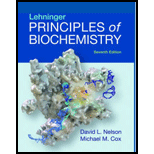
(a)
To determine: The free energy required to synthesize
Introduction:
The adenosine triphosphate (ATP) is a complex organic compound which is produced during the process of cellular respiration. Cellular respiration is the process by which energy is produced in a cell. Energy is released from the breakdown of glucose in cellular respiration that is used by the cell for performing various life processes. Mitochondria are considered as the powerhouses of the cell, which synthesizes energy in the form of ATP.
(b1)
To determine: The weight of
Introduction:
The adenosine triphosphate (ATP) is a complex organic compound which is produced during the process of
(b2)
To determine: The percentage of the body weight which is represented by the weight of
Introduction:
The adenosine triphosphate (ATP) is a complex organic compound which is produced during the process of cellular respiration. Cellular respiration is the process by which energy is produced in a cell. Energy is released from the breakdown of glucose in cellular respiration that is used by the cell for performing various life processes. Mitochondria are considered as the powerhouses of the cell, which synthesizes energy in the form of ATP.
(c)
To explain: The apparent contradiction regarding the fact that the adults synthesize large amounts of ATP daily, their weight, structure, and composition do not change significantly during 24 hours.
Introduction:
The adenosine triphosphate (ATP) is a complex organic compound which is produced during the process of cellular respiration. Cellular respiration is the process by which energy is produced in a cell. Energy is released from the breakdown of glucose in cellular respiration that is used by the cell for performing various life processes. Mitochondria are considered as the powerhouses of the cell, which synthesizes energy in the form of ATP.
Want to see the full answer?
Check out a sample textbook solution
Chapter 13 Solutions
Lehninger Principles of Biochemistry
 BiochemistryBiochemistryISBN:9781319114671Author:Lubert Stryer, Jeremy M. Berg, John L. Tymoczko, Gregory J. Gatto Jr.Publisher:W. H. Freeman
BiochemistryBiochemistryISBN:9781319114671Author:Lubert Stryer, Jeremy M. Berg, John L. Tymoczko, Gregory J. Gatto Jr.Publisher:W. H. Freeman Lehninger Principles of BiochemistryBiochemistryISBN:9781464126116Author:David L. Nelson, Michael M. CoxPublisher:W. H. Freeman
Lehninger Principles of BiochemistryBiochemistryISBN:9781464126116Author:David L. Nelson, Michael M. CoxPublisher:W. H. Freeman Fundamentals of Biochemistry: Life at the Molecul...BiochemistryISBN:9781118918401Author:Donald Voet, Judith G. Voet, Charlotte W. PrattPublisher:WILEY
Fundamentals of Biochemistry: Life at the Molecul...BiochemistryISBN:9781118918401Author:Donald Voet, Judith G. Voet, Charlotte W. PrattPublisher:WILEY BiochemistryBiochemistryISBN:9781305961135Author:Mary K. Campbell, Shawn O. Farrell, Owen M. McDougalPublisher:Cengage Learning
BiochemistryBiochemistryISBN:9781305961135Author:Mary K. Campbell, Shawn O. Farrell, Owen M. McDougalPublisher:Cengage Learning BiochemistryBiochemistryISBN:9781305577206Author:Reginald H. Garrett, Charles M. GrishamPublisher:Cengage Learning
BiochemistryBiochemistryISBN:9781305577206Author:Reginald H. Garrett, Charles M. GrishamPublisher:Cengage Learning Fundamentals of General, Organic, and Biological ...BiochemistryISBN:9780134015187Author:John E. McMurry, David S. Ballantine, Carl A. Hoeger, Virginia E. PetersonPublisher:PEARSON
Fundamentals of General, Organic, and Biological ...BiochemistryISBN:9780134015187Author:John E. McMurry, David S. Ballantine, Carl A. Hoeger, Virginia E. PetersonPublisher:PEARSON





